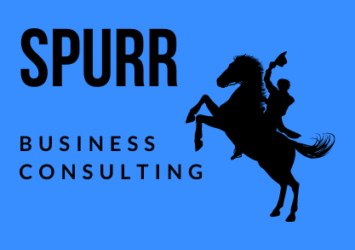
BUSINESS TERMS
affiliate: typically a person, business or subsidiary group that has an official relationship with another person or business for the purpose of mutual benefit; i.e. business referrals and/or profit sharing
affiliate marketing: a marketing or sales relationship whereby one online retailer pays commission to an external website for traffic or sales attributed by its referrals
acid-test ratio: (also known as a quick ratio) a measure of how liquid a business is which directly affects its ability to pay current liabilities as they are due using what is known as “quick assets” which are short term assets or assets converted to cash under 90 days.
analytics: the means to identify, and interpret meaningful patterns in data. Usually used to make effective decisions based on predicted future activity of website visitors by looking at their behavior history.
angel investor: an investor in small startups or entrepreneurs that is often family and friends when obtaining funding from traditional sources are not available. This is often a one-time investment to assist a business to get started or provide an infusion of cash to support a business project or relieve financial pressure during tough times in the early stages of a business’s development.
arbitrage: the act of buying and selling an asset or product to profit from difference in the price. It is most often referred to a trade that profits by taking advantage of price discrepancies of the same or similar financial instruments in different markets. Arbitrage exists when a market is not efficient or supply and demand have not settled into a predictable balance.
bandwidth: (could be described as “transfer rate”) it’s typically the space a wired or wireless network communications link has to send a maximum amount of data from one place to another on a computer network or internet connection at any given time. This is usually measured in bytes per second. Don’t confuse bandwidth as a measure of network speed. I.e. not the speed which a file transfers, however the size of the file.
best practices: procedures and methods that are accepted and described as the most appropriate, correct, or most effective for a particular industry.
bounce (rate): A bounce refers to the time someone visits a single page on a website. The rate is the percentage of visitors a website has that navigate away from the same site after viewing a page then leaving. This can be determined as a session that causes only a single request to a search engine analytics server without causing other requests to the analytics server during the same session.
branding: the promotion of a product or company using advertising and unique design; the marketing strategy to create a company name, symbol or design that identifies and makes a product stand out from other products
brick and mortar: used to describe businesses that operates traditionally with a physical address with a building or store front rather than solely online. Examples are retail shops, production facilities, or warehouses.
business plan: a document that sums up a business’s operations and financial objectives of a business and lays out detailed plans and budgets to explain how the the business’s objectives will be met; the “road map” to a business’s success
cash flow: the cash and cash-equivalents a business moves in and out of a business during a specific period; the difference in amount of cash on hand from the beginning of a period (opening balance) to the end of a period (it’s closing balance).
click through rate (CTR): is the number of users who click on a link compared to the number of total users who view the same website page, email, or advertisement. It’s normally used to determine the success of an online advertising campaign for website and also its performance on email campaigns
competitive analysis: : is the process by which a business identifies its direct competitors to compare their products/services, their pricing, their value proposition, and their marketing strategies, their strengths and weaknesses to those of the business itself.
content creation: the act of generating topical ideas that are attractive to a buyer or particular group in the form of written or visual content about those ideas and making them accessible to an audience as either a blog, a video, an infographic, or another format.
content marketing: marketing that involves the creation and sharing of online material (such as videos, blogs, and social media posts) that doesn’t specifically promote a brand but instead is meant to trigger some interest in a particular product or service.
conversion rate: the number of visitors to a website that perform a preferred goal (a conversion) such as clicking on a “call to action” button, making a purchase, or filling out a contact form compared to the total number of website visitors.
copy writing: the act of writing “protected” content (whether written or spoken) that gets people to take some form of action. This content is then available to be used solely by its creator unless permission is given.
crowdsourcing: the strategy of collecting information or input for a task or project by conscripting the services of a large number of people, either for free or for a fee usually done via the Internet. Crowdsourcing has proved to be effective in reducing design costs, spotting trends, and increasing customer engagement. customer journey: the entirety of the experiences that a customer has while interacting with a company, its products/services, and its brand. This is a holistic view that is relational instead of transactional, hence its described as a “journey” through all aspects from first impression – introduction – sale – customer service – delivery – followup – return sales, and customer retention.
differentiation: the process of making a product or service stand out from others; to make a product or service more appealing to a specific target market compared to a competitor’s products. This can also apply to distinguishing a company’s products from each other as well.
digital economy: (also referred to as the “Web Economy or Internet Economy”) that is based on digital computing technology,transactions occurring over the internet. although we increasingly perceive this as conducting business through markets based on the internet.
domain authority: a degree of the power a particular domain name has according to search engine ranking factors. Domain authority is typically determined by a combination of considering (1) a domain’s popularity, (2)How long a domain has existed on the web, and (3) a domain’s size. This term or “metric” is known as DA or domain authority credited to SEO gurus Moz.
e-commerce: the use of financial transactions such as the buying and selling of goods or services on the internet. E-commerce applications and website plugins are constantly being refined and expanded for accuracy, security, and user friendliness.
elevator pitch: for a business application, this is a short descriptive statement or idea intended to capture the listener’s attention typically in 60 seconds or less
entrepreneurship: the skill sets and drive to develop, organize and manage a business venture along with the willingness to take on any of its risks in order to make a profit.
freemium: a pricing strategy whereby a product or service is provided free of charge initially, then for a “premium” a consumer can upgrade for additional features and services either for virtual(online) goods or physical(offline) goods. This is typically applied to products such as software, games, media, or other web services.
goal setting: the act of identifying something to accomplish and establish measurable goals and time frames in which to meet those goals
grant writing: completing a required application process for a financial grant to be provided by a government agency, department, foundation, trust, or corporation.
Innovation: the introduction of new ideas, methods, ideas, or products from a new perspective to solve a problem and provide value
leveraging: for business purposes, using borrowed capital to invest in order to generate profits greater than the interest payable.
logo: a symbol, graphic, or design representing a business identifying its products, uniform, vehicles, etc.; related to a company’s trademark, abbreviation, etc., designed to be unique recognition.
market research: collecting, analyzing, and understanding information about a business’s marketplace as it pertains to it’s products and services compared and contrasted with the products and services it’s competitors offer. By focusing on a business’s target market, it’s customer’s past and present, future behaviors can be relatively accurately predicted. Factors considered in this research are characteristics, spending patterns, and geographic location. Market research is a vital tool in predicting future trends in a particular market.
marketing: in general terms, marketing is the process by which a business introduces,promotes, and advertises the sale of its products and services. In a “nutshell”, marketing is creating customer demand for what a business offers based on customer’s interests, needs, and solutions to problems they may face.
marketing campaign: A detailed, game plan composed of previously researched actions customized and designed to promote a business’s reputation in its particular marketplace, and it’s products and services using various means of communication with it’s existing customers and potential customers. market mapping: studying market conditions then plotting them on a map to discover trends and how variables correspond with consumers and products. The results of market mapping can help companies identify weak areas and determine solutions by examining related variables.
mission statement: a formal statement of a business’s fundamental purpose and area of focus Mission statements typically define in a general sense, what the business views as important, what markets it serves, and state the direction the business intends to take in those markets. (not to be confused with a business’s vision which specifically defines the morals and character of a business.)
niche market: is a subset of a market and is a specific product or service aimed at satisfying specific market needs, price range, production quality, and demographics. Niche markets are typically small markets.
mission statement: a formal statement of a business’s fundamental purpose and area of focus Mission statements typically define in a general sense, what the business views as important, what markets it serves, and state the direction the business intends to take in those markets. (not to be confused with a business’s vision which specifically defines the morals and character of a business.)
niche market: is a subset of a market and is a specific product or service aimed at satisfying specific market needs, price range, production quality, and demographics. Niche markets are typically small markets.
non-profit business (or not for profit): a business that has an approved tax-exempt status by the Internal Revenue Service (IRS). Because of this status, they pay no income tax on donations received or monies they generate through fundraising. Also called “not for profit” businesses, they are typically formed for religious, charitable, literary, artistic, scientific, or educational purposes. These incorporated businesses are run by a board of directors who do not benefit financially for their work. from which its shareholders or trustees do not benefit financially. Any income or money retained must be used solely for the expenses of the corporation. Most are formed 501(c)3 organizations.
off site or off page SEO: is the process by which a company can perform specific actions in order to better position where their website shows up on what is commonly called (SERPs) – “Search Engine Results Pages” According to the commonly recognized experts in this field SEOMoz states that “Optimizing for off-site ranking factors involves improving search engine and user perception of a site’s popularity, relevance, trustworthiness, and authority. This is accomplished by other reputable places on the Internet (pages, sites, people, etc.) linking to or promoting your website, and effectively “vouching” for the quality of your content.”
onsite or on page SEO: in contrast from off site SEO, this is the process of optimizing specific pages of a website in such a way that search engines will be able to more accurately interpret what a business is trying to communicate on its website with the goal of being relevant to searches their target customers perform and ultimately ranking the link to their website to rank higher on the SERPs.
opportunities: a situation or condition that provides an opening for a business to act to take advantage of a favorable circumstance and/or to attain a goal.
performance: for business purposes, this is the success in moving forward in a positive direction and/or reaching/completing a particular task or goal according to predetermined standards, cost estimates, or other measurements of efficiency. Also refers to the results a business obtains considering specific expectations set out by its customers or by contract.
relevance: having a characteristic or quality that is appropriate or specifically applies to a particular circumstance or need. In regards to search engine optimization (SEO), relevance is the level at which the content of a particular website page or a website as a whole most accurately relates to a search term a user may request. The more “relevant” a website, the higher it will rank on a SERP for a internet search.
return on investment: this is a means of calculating and evaluating whether or not capital invested results in a positive impact. Typically, (ROI) measures specifically the amount of return in mathematic form in order for a business to make better decisions about becoming more efficient. To calculate ROI, the benefit or positive affect achieved is divided by the cost or effort put in to achieve it normally expressed as a percentage or a ratio. ROI = (Current Value of Investment – Cost of Investment) / Cost of Investment
S.W.O.T. analysis: This is an acronym for: strengths, weaknesses, opportunities and threats analysis. This strategy is designed to assist a business in first discovering and what elements exist in a project, then develop a better understanding what effect these elements may have. By weighing their benefit and answering questions in each of these areas, meaningful information is organized into a useful tool to enable a businesses owner to make appropriate decisions. While strengths and weaknesses are often internal, opportunities and threats tend to come from external sources. Strengths: What qualities of a business give it a competitive advantage over its competitors? Weaknesses: What characteristics puts a business at a disadvantage compared to its competitors? Opportunities: What elements are present in the environment to give the business an opportunity in which to take advantage? Threats: Is there anything present or potentially present that will cause the project to fail or harm the business?
search engine marketing (SEM): a digital strategy designed to boost the digital exposure a business’s website on search engine results pages. While this is closely related to SEO, this strategy is distinguished due to the fact that instead of focusing on “organic results” (natural results generated through search engine algorithms), SEM is achieved through paying for a prominent position. Businesses typically will only pay for activities or “clicks” commonly referred to as “pay per click”. How much advertising costs for a particular search term will vary based on the following factors: geographic location for the ad, the volume of competitors in that location, and the bid price they are willing to pay for each click. Where this is basically a temporary solution, it can be extended by spreading out these marketing dollars over a period of time.
search engine optimization (SEO): the process of “organically” drawing internet traffic to visit a website that makes a genuine connection between a search term and a solution for that search term. Because this kind of optimization is not paid for, it tends to provide a more long lasting search engine results page position. The traffic SEO brings to a website can be argued to have a better conversion rate since these results tend to better connect interested users to what they are searching for.
social commerce is a commerce using transactions originating from social media platforms
social media marketing (SMM): is a type of internet marketing that uses social networking websites to market a business. The purpose of SMM is to encourage social media users through interaction to share information with their social networks and in doing so assist in increasing the business’s brand awareness and broaden customer reach with the goal of converting this traffic to the sale of business’s products and services.
splash page: this is typically a website page that visitors will first visit that is designed to immediately capture attention for a brief promotion or introduction to a company’s website home page. A splash page could also be used to communicate to a user software or applications required to allow their website experience to flow more smoothly.
startups: are most often new emerging businesses that are founded by an individual or entrepreneur with the goal of creating a scalable, viable business model intended meet a marketplace need. Startups and entrepreneurship are similar. Where they differ is that entrepreneurships include all new businesses, self-employment as well as businesses not designed to grow big or become registered. Startups are new businesses that are meant to grow beyond the solo founder, have multiple employees, and grow large. Start-ups, by nature tend to have a lot of uncertainty involved, therefore, they have high rates of failure. If a start up makes it big, it is huge. Some startups become what are called “unicorns” which are described as privately held companies with a value of over $1 billion.
strategic partnership: a relationship between businesses typically with terms detailed in one or more business contracts. A strategic partnership differs from an official “partnership” in that ownership is not the key aspect rather a mutually beneficial relationship where they assist one another working together to make things easier for each and work to achieve goals together.
tagline: a brief statement that grabs attention and hints at the motto of a business; a catchy slogan meant to leave a informative and lasting first impression
target marketing: a marketing strategy focused on identifying key demographics or segments of potential clients and concentrating on their specific interests and needs promoting a business’s products or services that provide them solutions
team building: the process of creating an environment that fosters unity and motivates people to work together forming a coordinated effective unit to achieve a common set of goals.
traction: proof positive that a business’s products or services are meeting the needs, providing a solution, and aligned with market trends for their specific target market
trend analysis: is the process of analyzing business data in a specific period of time to determine consistencies and trends that exist both in business processes and the marketplace. This kind of analysis helps a s business to identify areas where the business is experiencing success, where the business is underperforming, and is useful in the decision making process what direction to go in the future.
unit selling price: the amount a business charges for a single product/ or service This is a useful tool in determining sales volume and setting goals for a specific area and period of time.
user experience: the overall experience of a person using a product or service, and particularly visiting a website or using a computer application. This is measured in terms of user “friendliness” i.e. how easy is it to use, is it easy to navigate, does it communicate clearly, is it smooth and efficient?
value proposition: a statement that clearly describes the promise of value or benefits that a product or service will provide
venture: A business project where there is an expectation of gain along with a certain amount of the risk,loss, or failure
viral marketing: based on the term “viral” meaning rapid and/or widely circulated on the internet; this is a marketing technique that entices websites and/or users to share to their network of contacts a marketing message which results in exponential growth in a business’s message and internet footprint.
vision statement: this implies a broad perspective of what a business desires to achieve typically in a period of time from 5-10 years or longer; how the business sees itself at some point in the future which sets a general direction for planning and execution.
wheelhouse: traditionally, a “wheelhouse” is an enclosed space on the bridge of a ship where it’s steering wheel a captain has control of steering the ship. So when referred to from a business perspective, this means if something is in someone’s wheelhouse, it’s in their area of competency, ability, or specialty
workflow: the evolution or development of steps, actions, or activities that comprise how a business accomplishes a task. This can involve two or more individuals that perform their tasks in a particular sequence or order. Each step often is dependent upon other steps to allow for the successful creation of value
workforce optimization: is a business strategy that focuses on employee efficiencies that originally started in call centers to improve workforce management and agent performance, however in recent years it has been applied to other industries as well. Companies typically design these strategies by monitoring specific employees roles and specific tasks desired, then assign the necessary number of employees required. Common industries where this strategy is applied is retail, manufacturing, and financial services.





